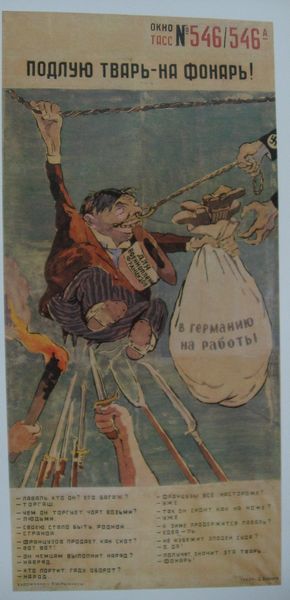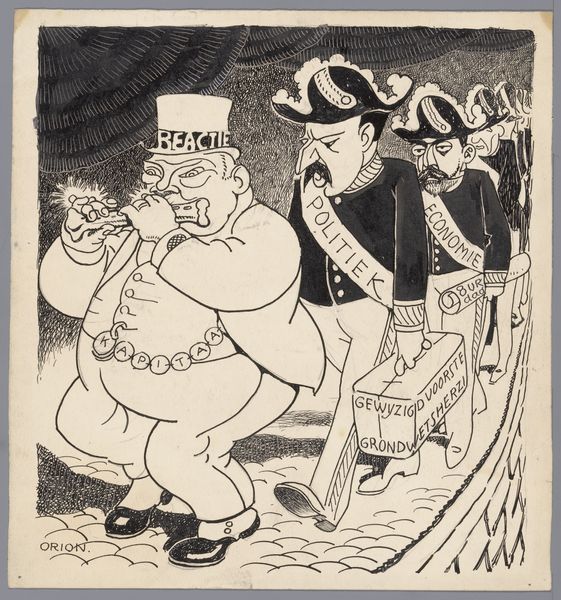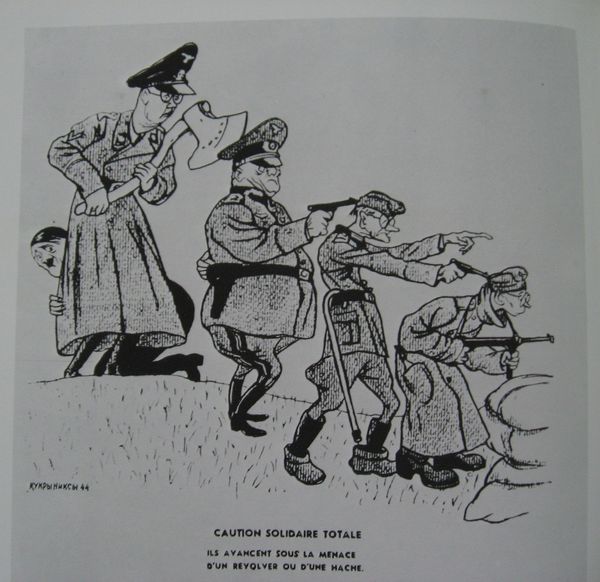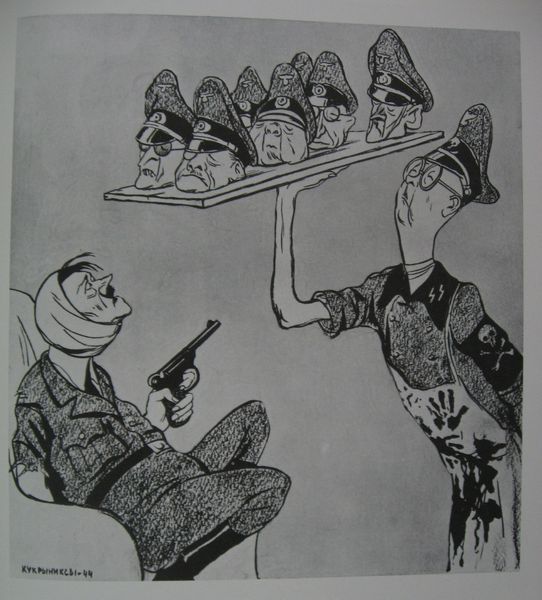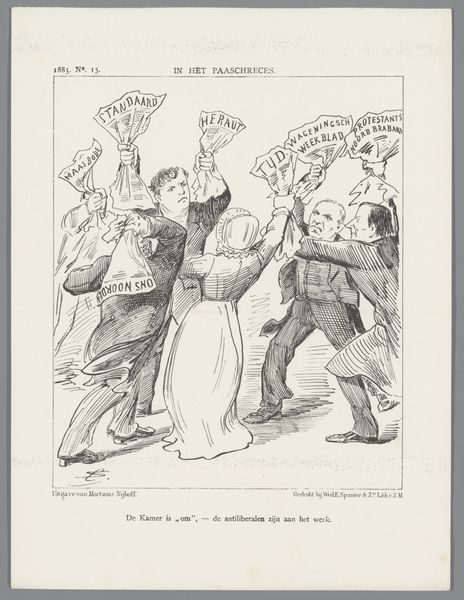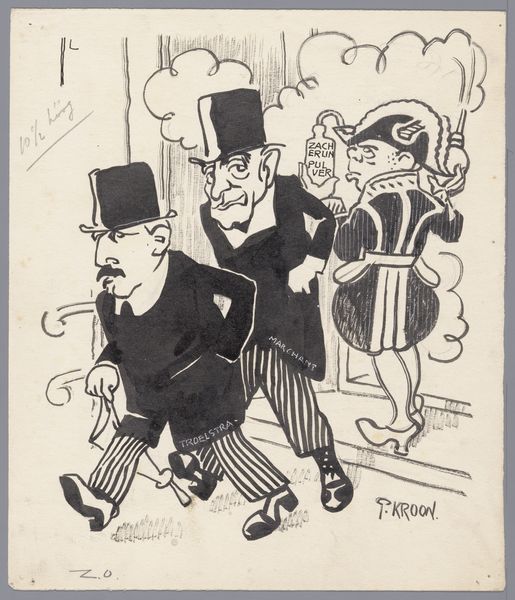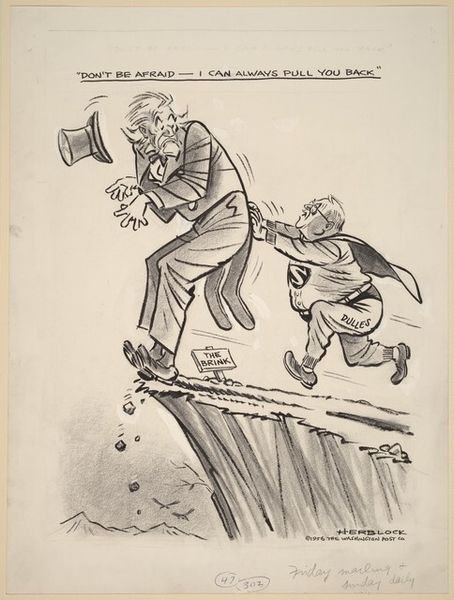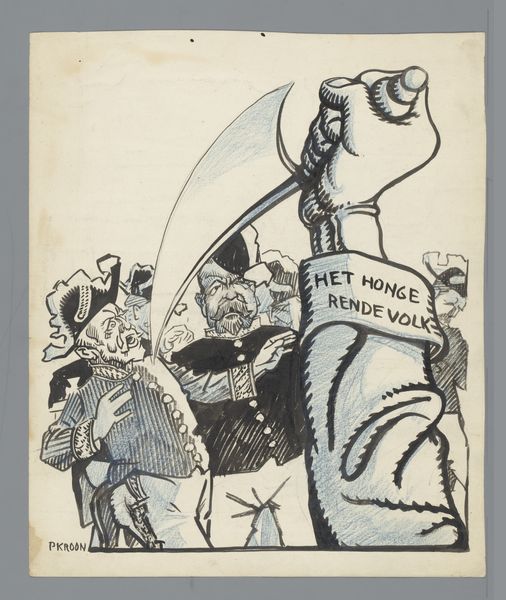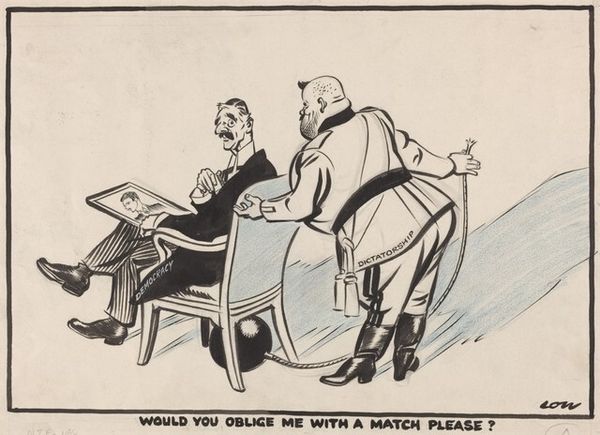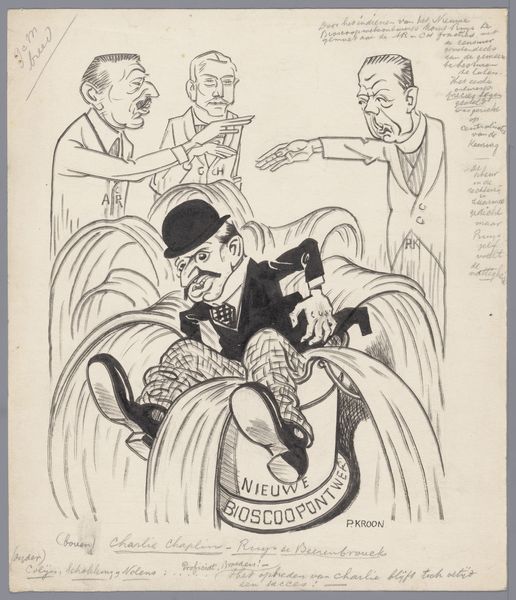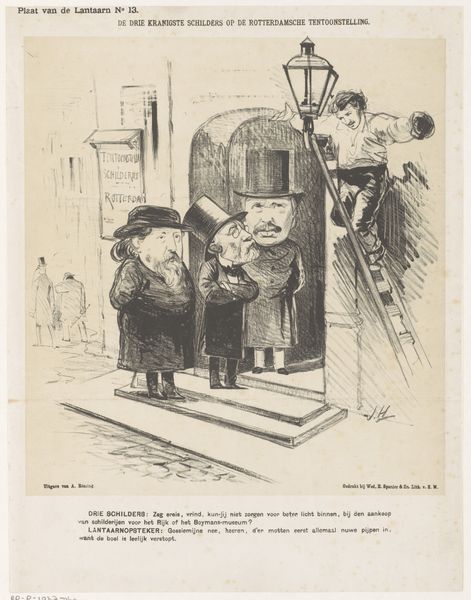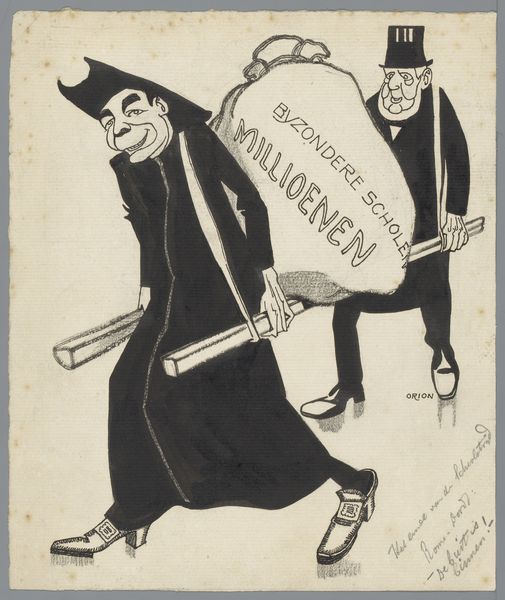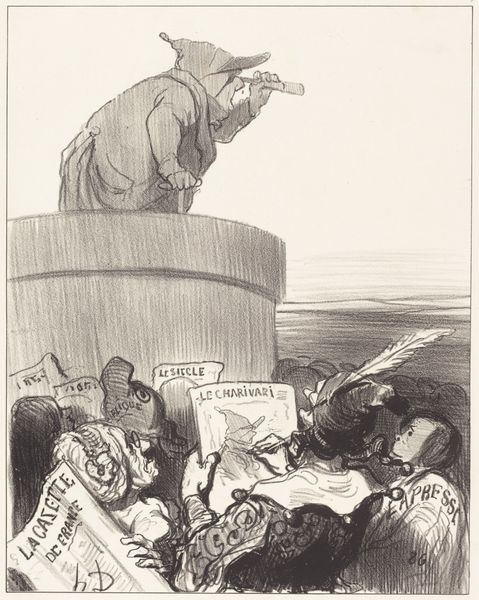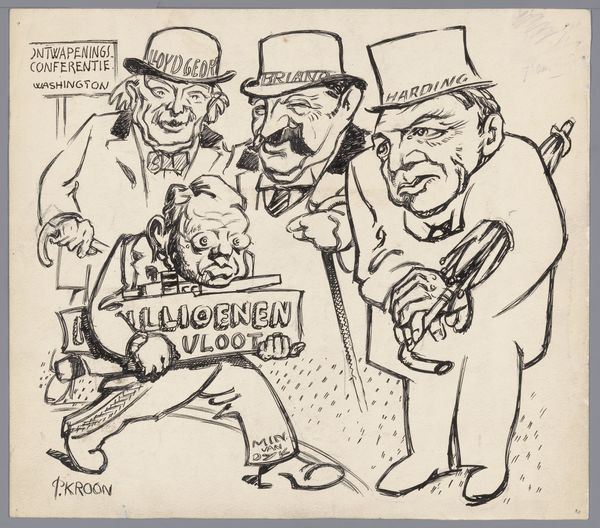
Copyright: Kukryniksy,Fair Use
Curator: This caricature, titled "Goebbels' Goldmine," was created in 1941 by the collective known as Kukryniksy. As you can see, it's rendered in ink, showcasing the artists' distinctive style of political satire. Editor: My first impression is of controlled chaos, of order perverted. The stark black lines carve out these grotesque figures, unified by the recurring motif of the funnel—at once absurd and vaguely sinister. Curator: Exactly. Kukryniksy were renowned for their sharp critique of Nazi ideology. This drawing clearly implicates Joseph Goebbels, the Nazi propaganda minister, and we must analyze his position in the drawing to discern the narrative at hand. Editor: The funnel, quite literally, appears to be the focal point—positioned where the heads should be, channeling some dark liquid. Note the texture, the way the ink suggests an almost viscous quality, evoking the sludgy, murky nature of lies and manipulation. Curator: It is clear that Kukryniksy is employing very effective visual metaphors, the liquid likely represents propaganda being poured into and then spewed by each of Goebbels’s followers and ultimately used as a weapon against an unknown enemy, based on what the one figure is announcing at the bottom right of the picture. This piece underscores the manipulative power of the Nazi regime. Editor: Absolutely. I also can't help but notice the visual rhythm created by the repeated forms – the funnels, the nearly identical figures lining up for their “fill” – emphasizing the dehumanizing aspect of propaganda and of war at the same time, implying, as you mentioned before, blind followers, almost as robots, ready to be used for malevolent reasons. Curator: Kukryniksy cleverly utilized caricature to expose the moral bankruptcy and outright absurdity of the Nazi regime, it is no coincidence that it is called ‘Goebbels Goldmine’. Editor: Agreed. It is indeed striking how, through the meticulous manipulation of simple materials—ink on paper—a drawing transcends its physicality and delivers a sharp, unflinching critique of the power of false promises.
Comments
No comments
Be the first to comment and join the conversation on the ultimate creative platform.
